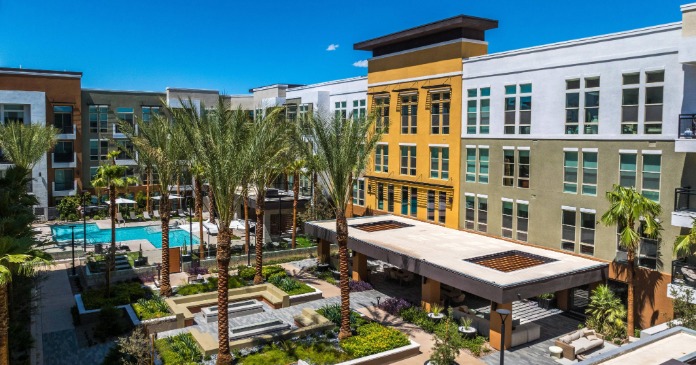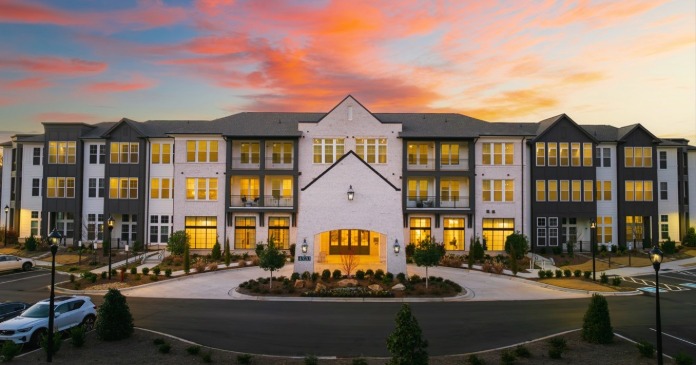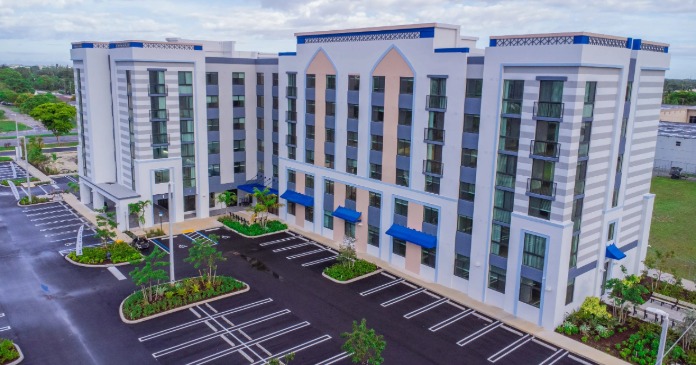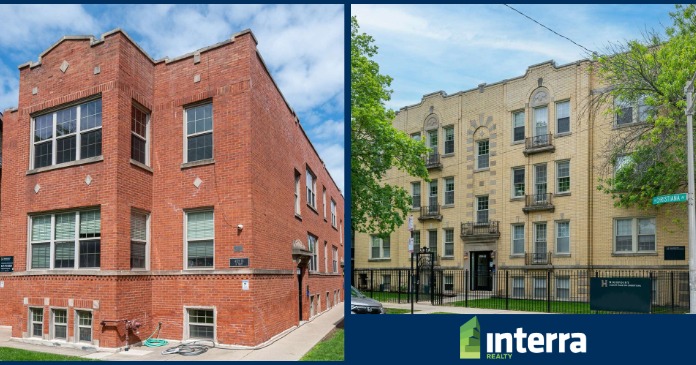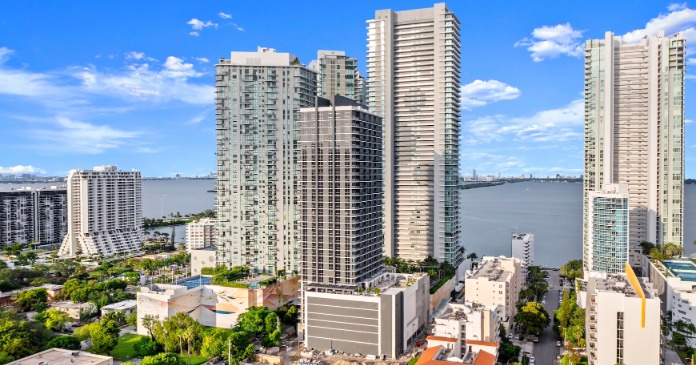“More properties are underway and unsold than at any time in history,” says Jack McCabe of McCabe Research and Consulting in Deerfield Beach, Fla. “Sales in all segments of the for-sale housing market have been down for the past six or seven months. It’s not just happening in Florida, but in other overabundant markets like San Diego, Las Vegas, Phoenix, Washington, D.C., and Chicago.”
McCabe anticipated this scenario more than a year ago. Through 2005, homebuilders were pushing houses out of the ground as fast as they could, and condo developers and converters were scrambling to permit projects and make the number of lender-required pre-sales.
Hyperactivity such as this could be sustained only while lenders liberally granted low-interest and interest-only financing. Prices soared on speculator demand. Buyers camped out on builders’ doorsteps to plunk down deposits on to-be-built homes while condo waiting lists quickly filled up. But the party came to an abrupt halt in Q1 as the median price of a home in the U.S. fell 3.3% from Q4 2005, the second consecutive quarter that prices declined. Prices still are up 10.3% from a year ago, but most of those gains occurred in the first two quarters of the 12-month period.
Now, well into 2006, the signs United Dominion Realty Trust CEO Tom Toomey predicted last year would herald the end of the condo wave are prevalent. The signs offer leased luxury autos in your garage on move-in, paid points, closing costs, first-year mortgage payments and homeowners association dues, and tens of thousands of dollars in free options, such as upgraded appliances, finishes and landscaping. McCabe is seeing broker concessions in Florida of 5%, 7% and as much as 10% to bring in qualified end-user buyers.
Pulte Homes, a national homebuilder based in Bloomington Hills, Mich., is offering to pay buyers’ mortgage payments for the first six months on homes at several communities the company is building. Pulte reported a 20% year-over-year drop in earnings in Q2 and the company’s new orders across the country were down 30% in April and May. Pulte isn’t the only homebuilder suffering these conditions. Most are steeling themselves for lower earnings and sales this year.
Lennar Homes, which beat Wall Street expectations with a 35% reported increase in first quarter sales and earnings, expects gross margins to drop 100 basis points this year, as a result of buyer and broker incentives, which averaged 4% of the company’s average selling price for homes in Q1.
But no residential sector is suffering like the condo sector, especially in Florida. “Condo developers here are seeing cancellation rates of 13% to 28% and, due to delays in starts, are offering two additional weeks of the right of rescission,” says McCabe. “The most vulnerable buyers are the speculators who bought over the past 18 months, and they are no longer buying. Only end-users are left. The only properties that are selling today are the best assets at the lowest prices.”
The price is right
H&H Development, a Coral Gables, Fla., company that has completed 600 condo units in the Miami-Dade area, hit on the right price points for two projects that just broke ground in Southeast Florida. The company’s 10-story, 288-unit City Palms in West Palm Beach and the 18-story, 176-unit Gallery Art Condominiums in Miami just received construction financing after the developer made the required 70% pre-sales, mostly to local and second-home buyers from the Northeast at prices below the median price for luxury product in those markets.
“We haven’t had to offer concessions on either project,” said H&H president Harvey Hernandez. The one-, two- and three-bedroom condos at City Palms, ranging from 650 s.f. to 1,500 s.f., are priced from the $300,000s to the $500,000 range. Gallery Art’s ones and twos, which range from 738 s.f. to 1,350 s.f., start in the high $200,000s to the high $500,000s. According to McCabe Research, the median price of a new condo in Miami is $700,000, $405,000 in West Palm Beach and $388,000 in Broward County.
“Everything is a factor of how much you pay for the land, how efficient your building is and how quickly you get it out of the ground, as well as relationships with contractors, builders, suppliers, getting plans and permits approved, pre-sales and getting financing,” says Hernandez. “We stay on top of the game. But if you have a year delay in a project, it hurts pre-sales because people don’t take you seriously and, if they think you can’t start, they won’t give you a 20% deposit.”
Last year, H&H paid $5.6 million for the 1.8-acre parcel for City Palms and brought aboard the Carlyle Group, one of the world’s largest private equity firms, as a partner. The $100 million project, now more than 80% sold, received an $87 million construction loan from Wells Fargo. Completion is scheduled in 22 months.
Commerce Bank provided $60 million in construction financing for the Gallery Art project, scheduled for completion in two years. Formerly known as the Mondrian, the project is around eight months behind schedule due to the overwhelming number of permit applications the city had to wade through. Yet, Hernandez says he reached his pre-sale requirements for Gallery Art in the first 60 days, without the use of a concessions carrot. Even so, there’s always the chance buyers could get cold feet and back out. And construction costs are putting the squeeze on margins. “If we don’t build it now, it could cost more six months from now. We don’t know, we just have to move ahead,” says Hernandez, who hopes to go vertical with three more projects in 2007. He’s debating switching to rental for the next few years.
Location, location, location
Silverstone Communities launched its first development division in Southern California three years ago, in partnership with Hearthstone, one of the nation’s largest institutional investors in residential development. Price and location provided a modicum of protection for the company’s condo conversion business in San Diego — the market where the condo wave first gathered momentum five or six years ago and was the first to see a cooling trend.
Silverstone never built or converted in Downtown San Diego, which typically doesn’t attract families and has been dominated by speculative buyers, making it more vulnerable to a housing market slowdown.
“We didn’t see a lot of speculator interest at our converted properties,” says William Fanning, Silverstone’s Southern California president. “Maybe 10% to 15% — but they weren’t true speculators buying condos to flip. They bought to rent them out and still are renting them.”
“Around 15% of our buyers in San Diego are parents buying for their adult children and going on title with them. From a lender’s prospective, those are owner-occupied units, so it makes economic sense when parents can buy an after-tax home for about the same price their children are paying for rent and get the tax benefits and appreciation.”
Silverstone sold out its first conversion in San Diego about a year ago and has two active projects there. The company sold 208 of the 338 units at Il Palio in the master-planned community of Carmel Mountain Ranch, east of Downtown along I-15. The 240-unit Villa Montevina in Rancho San Diego, another master-planned community located south of El Cajon, just opened in May and 20 units have sold at prices averaging a little more than $300,000. Fanning is offering concessions of $5,000/unit to $10,000/unit at Carmel Mountain Ranch and $5,000/unit at the Rancho San Diego property.
Over the next few years, Fanning has no plans for more conversions in San Diego. But he would like to find land in the market to build new condos. That won’t be an easy task, since there’s very little land in the MSA available for multifamily. Fanning is actively looking for condo conversion opportunities and land for ground-up condos in Los Angeles, Orange and Ventura Counties, as well as in San Bernardino and Riverside, with a budget of around $100 million through 2007.
The company recently bought the 82-unit Park Place in Burbank, changed the name of the 21-year-old apartment community to Entourage and is converting the units to condos that will be marketed at base prices from around $320,000 to $500,000. Silverstone paid $22.275 million, or $271,646/unit, for the property that is located across the street from Warner Bros. back lot and about a mile from other notable entertainment studios. The entertainment industry supports a workforce of around 8,000 people, many whom can’t afford to live close by. Fanning plans to spend around $25,000/unit to bring the units up to condo quality. Planned renovations include extensive kitchen, bath and laundry room upgrades.
Vienna, Va.-based Wills Cos. is a diversified player focused on land development, condo conversions, owned and operated apartments and shopping centers in the Washington, D.C., and Baltimore areas. Principal Tim Wills hasn’t bought anything on a condo conversion basis in 19 months and doesn’t expect to for some time. He’s still selling out two condo conversions in Virginia.
“Our sales are down dramatically year-over-year in Northern Virginia,” says Wills. “But our 1001 Eastview/1001 Westview at the Ballston Metro in Arlington is moving. We’ve sold 75 condos this year, about 10 a month.” Wills bought the two towers, consisting of 454 townhouse-style units, from AvalonBay Communities about 18 months ago for a little more than $120.5 million, or 265,518/unit. AvalonBay paid $46.7 million for the 18-year-old asset in 1997. The project is 16% sold.
Wills also bought Fox Mill Station in Herndon from AvalonBay for $38 million in October 2004, spending $36 million, or $230,303/unit, to convert the six-year-old, 165-unit asset.
Wills increased incentives to move product. “Our concessions went from offering buyers 3% of their closing costs to 6%, and we take another 2% off if you buy within 30 days, standing inventory,” says Wills, who has 350 more units across both projects to sell. The company’s condos are priced at around $500/s.f.
There are no more conversions in the company’s pipeline through 2007. Instead, Wills plans include 25% retail, 25% office and the other half residential, the latter of which will be a 50/50 mix of income-producing deals and other opportunities. “We’re renting a lot more, pushing rents and getting NOI in to help the carry. We’re still looking for land and income-producing properties,” Wills says.
Where’s the upside?
Apartments are looking good for the next several years, thanks to the high cost of home ownership relative to rents and the huge reduction in the rental supply by condo converters. The run-up in home prices and the lack of new apartment supply as created the perfect environment for apartment owners to burn off concessions, paving the way for the healthiest effective rent growth since he market peak of 2000, according to a study by arcus & Millichap.
During the apartment slump of the past four ears, apartment developers and owners, unable to compete with the for-sale players in the acquisitions arena, found ways to take advantage of the high prices condo developers and converters were willing to pay for existing assets and entitled land. Some REITs, like Archstone-Smith, sold older, less attractive properties at prices 40% to 100% higher than they would have garnered as apartments.
“We used those low cost proceeds to create an arbitrage for us by reinvesting capital in much better locations at higher yields,” Archstone-Smith CEO R. Scot Sellers told analysts during the REIT’s Q1 conference call: “The big trade we made last year was moving money from South Florida at sales prices in the 3% cap rate range principally for older assets to purchase newer extremely well-located buildings in Manhattan in the mid- to high 4% range.” Equity Residential did the same. Others launched taxable REIT subsidiaries and began converting their own assets.
But demand from condominium converters has dried up and homebuilders aren’t banking land and won’t be until they use up what they already own.
Wills Co. sold a lot of land to homebuilders in the Washington, D.C., and Baltimore area and still sees some limited opportunities. “A year ago we had 1,000 lots in our pipeline and we sold them all. But right now it’s tough. Everyone is trying to figure out where the bottom is for a single-family lot and which markets are over-saturated,” Wills notes.
“Homebuilders today don’t want land on their balance sheet and are walking away from some deals. If we see a need for residential in those sub-markets, we’ll take over the contract, get entitlements, and buy the land when there’s a zoning or vesting right in it and add the infrastructure.”
Wills explains that over the past four or five years he was selling land in bulk to builders because the difference between what they were willing to pay and what it would cost to build wasn’t worth his time and effort. But that’s changed. Wills says, “Today, if there is true equity in the land — because a homebuilder contracted it two or three years ago but can’t afford to keep it on their balance sheet — they come to us to hold it and develop it back for them.”











